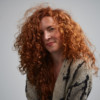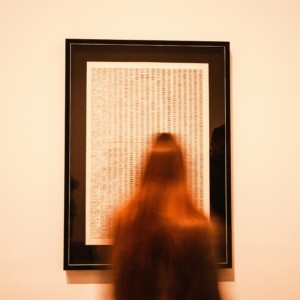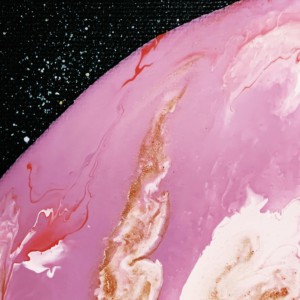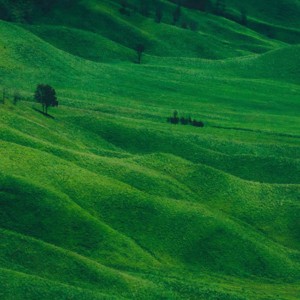Drawing Language: Experimental Scores, Drawings, & Asemic Writing Masterclass
Explore the intersection of experimental poetry, drawing, music, and performance as we create new work, adjacent to language.
This experimental poetry masterclass reads, listens to, looks at, and experiments with various forms of inscription at the intersection of writing, drawing, music, and performance, specifically, through graphic scores, asemic writing, performative scores, and other forms of drawing in proximity to language.
Drawing and writing both negotiate linearity and its subterfuge. Both tussle with (in)direct communication and emotional expression, with clarity and opacity. They can be gestural and as such point to the body, to performance. ‘Language has a body and the body has a language’, Benjamin writes. How do we acknowledge this body in this act of drawing-out language, imagining its gestures, movements, or sounds? What does the material ask of us? Drawing, in particular, establishes a relationship to time: the time it takes us to make a piece (dashed off or painstakingly pondered over), the time it takes to read or look at it, and then perhaps also to perform it.
Many artists in the 1960s submitted the written word to visual manipulation, treating it like paint or clay. Composers, in turn, subverted the Western notation system of the clef and staff. Such open forms of notation allowed for greater variation in interpretation. And yet, there’s room for remits and rigour. For constraint. For precision, for intention, for commitment. Sometimes this type of notation and composition can be meditative, comedic, instructive, at other times, therapeutic, or deeply philosophical.
Some writers/artists/theorists/musicians we will study: Renee Gladman, Mirtha Dermisache, Tim Ingold, John Cage, Xu Bing, Bernardo Ortiz, Shahzia Sikander, Christine Sun Kim, Nina Papaconstantinou, Guy de Cointet, Vilém Flusser, Roland Barthes, Mira Schendel, Cilla McQueen, Cathy Berberian, Mieko Shiomi, Unica Zürn, Glenn Ligon, Bernardo Ortiz, and others.
While gestural and deeply embodied on the one hand, experimental scores and asemic forms of drawing-writing also push towards abstraction, and in that abstraction perhaps give us a place for feeling that’s not previously determined. As Andrea Fraser notes about Fred Sandback’s abstract minimalist sculptures, in this removal of the artist, she finds: ‘a place for me’, ‘a transitional space’, a ‘place of affective possibility created by work that doesn’t ask me to feel, and so, I think, allows me to feel, and to be alone, in the presence of this art that’s so quiet and still, and makes too little in the way of demands’.
We will search for these transitional spaces of affective possibility, of philosophical enquiry, and of experimental generosity – always mindful of and pushing back against any claims for universality, purity, or authority.
Anyone is welcome – no prior knowledge of music, performance scores, asemic writing, or drawing is necessary. The masterclass encourages a wild and messy and exuberant spirit of exploration.
Masterclasses are an expanded version of our International Courses, with a much deeper consideration of technical craft and critical theory. These 12-week courses (maximum 10 places) are for advanced students only, and fluency with poetic language and ideas will be assumed. There are no live chats and they are suitable for UK and International students.
Concessions & Accessibility
To apply for a concessionary rate, please send relevant documentation showing your eligibility for one of our concessions to [email protected]; conditions of eligibility are detailed here. If you have any questions, wish to be added to the waiting list of a sold-out course, or require any form of adjustment to access our courses, please email [email protected]. For more information visit our Online Courses page.
Image credit: Scott Robertson
About Sophie Seita  View Profile
View Profile
Sophie Seita is a London-based artist and researcher whose work swims in the muddy waters of language and is informed by deep listening, critical opacity, queer abstraction, and a playfulness that’s both rigorous and pleasurable. Often working with others across disciplines, she’s expanding and deepening her ongoing intersectional queer collaboration with the musician and conductor Naomi Woo, to give voice to untold queer archives, as part of The Hildegard von Bingen Society for Gardening Companions. Most recently, this took the form of a fictional gardening talk show called bingenTV; a solo exhibition at Mimosa House; a zine called The Minutes; and a multi-layered encounter in the wetlands of Xochimilco, Mexico City, in collaboration with the organisation Ruta del Castor, the artist Carolina Caycedo, and numerous international artists, activists, farmers, and researchers. Seita teaches in the Art Department at Goldsmiths, University of London, and currently holds the 2023–2024 Werner Düttmann Fellowship at Akademie der Künste, Berlin, where she is developing a series of graphic scores and textile pieces. Her latest book is Lessons of Decal, a collection of experimental essays, out now with the 87 Press.
"Inspiration and constructive critique. Information and a safe collegiate atmosphere"
 Play, Happenstance, & Improv: Women in Abstract Art Masterclass
Play, Happenstance, & Improv: Women in Abstract Art Masterclass Bumptious & Unruly: Queering Ecopoetics Masterclass
Bumptious & Unruly: Queering Ecopoetics Masterclass ‘cicadas exist; chicory, chromium, citrus trees’: an Environmental Transreading Masterclass
‘cicadas exist; chicory, chromium, citrus trees’: an Environmental Transreading Masterclass